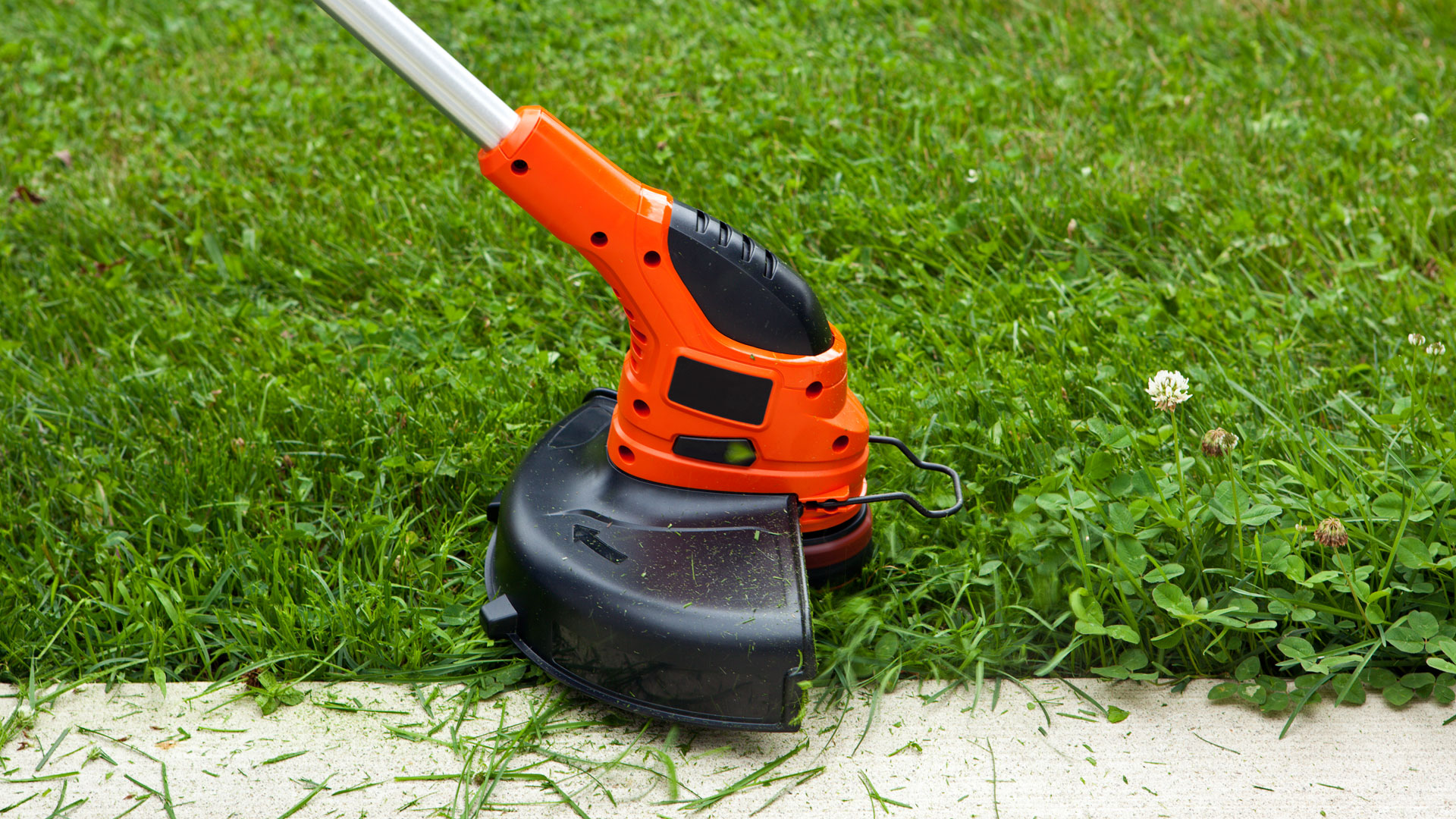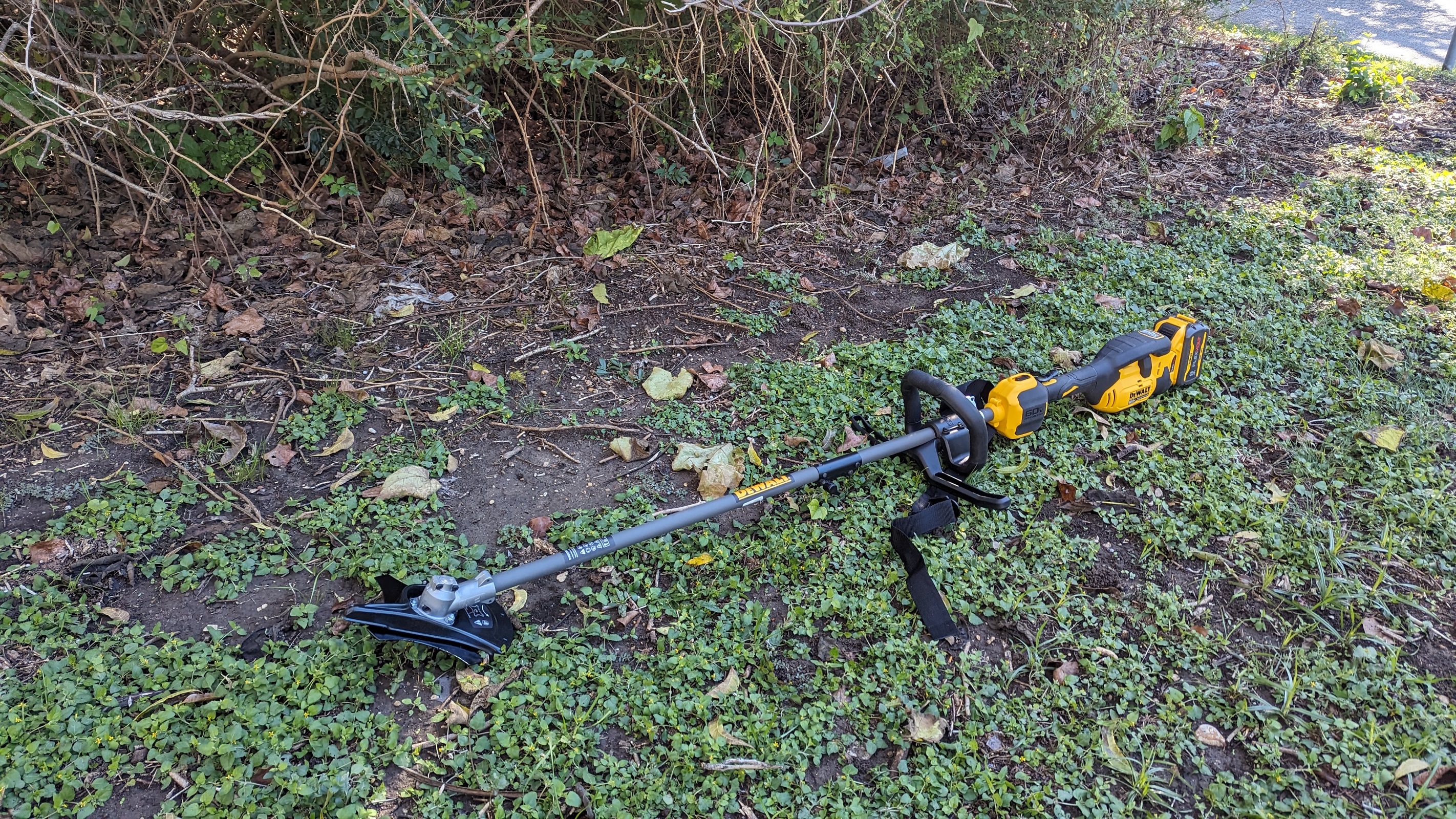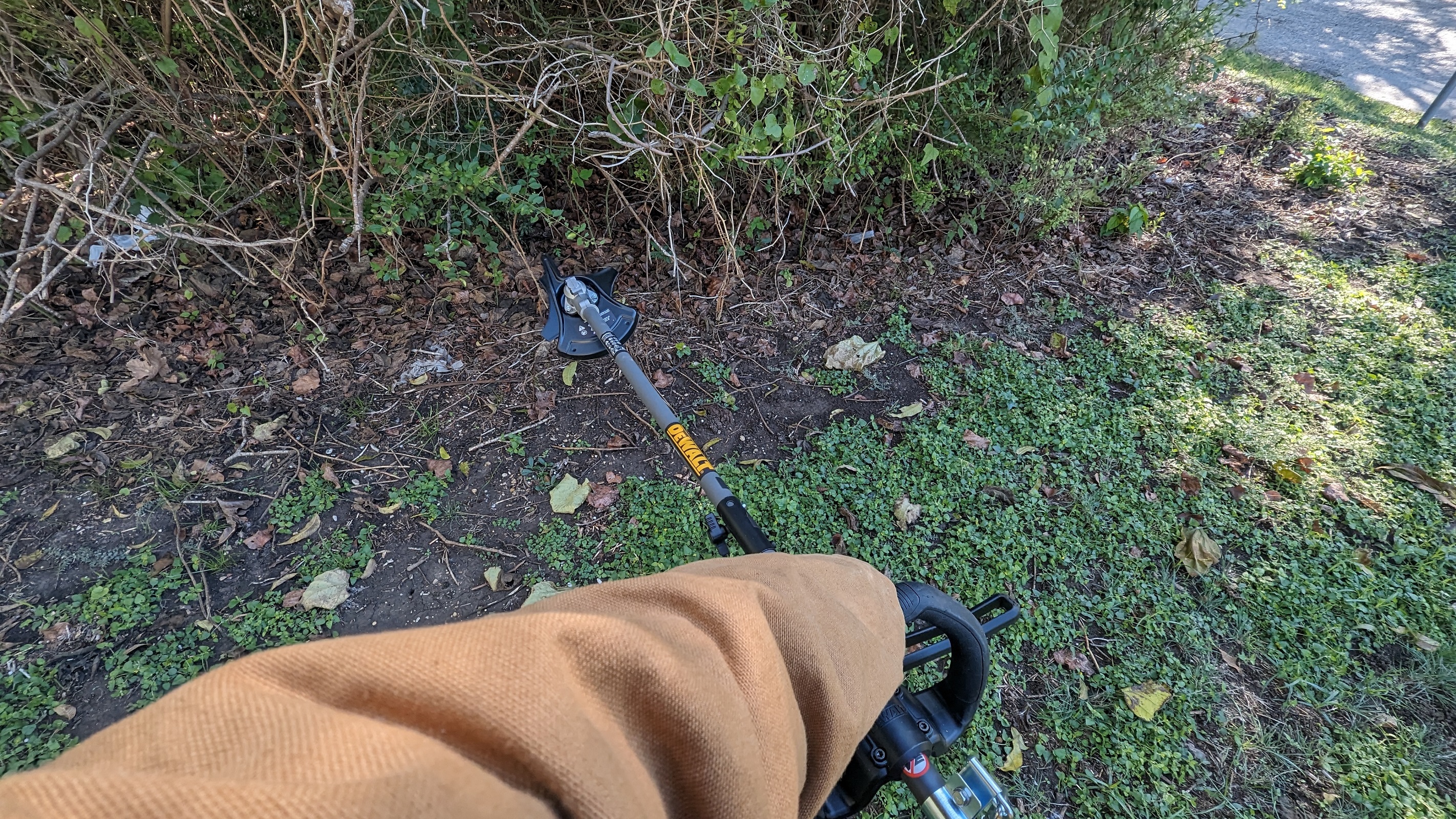If you are doing some lawn maintenance and don't know what is the difference between a weed eater, weed whacker and trimmer, you're about to be very surprised.
When cutting the lawn with your best lawn mower you'll often find that the deck won't get close enough to the patio or fence edge, despite your best efforts. This is where one of the best string trimmers - or weed eaters - would come in useful. The thing is; they're multiple names given to these yard tools. Some brands call them "weed whackers" or "string trimmers" or "weed eaters", but what's the difference? Is there a difference? We catch up with the experts to find out.
What is the difference between a weed eater, weed whacker and trimmer?
What is a... weed eater?
"The Weed Eater is the original string trimmer and the name was trademarked by its inventor George Ballas in the 1970s," says Fiona. "As a result of its success, other versions came on the market but as the term Weed Eater had been trademarked, they had to come up with different names for their weed trimmers. Husqvarna now hold the Weed Eater trademark."

Fiona Jenkins is a UK-based landscaper with over 25 years of experience in the industry. As a gardening expert for MyJobQuote, one of the UK's top trades-matching sites, Fiona offers her expert advice to MyJobQuote's tradespeople and homeowners.
What's a weed eater?
Ian Mendoza, another Plantin certified gardening expert, says: "A weed eater is a mechanical garden tool used to cut grass, weeds or plants.
"Other terms used to describe this tool include string trimmer, snipper, or simple grass cutter. The reason this tool is named after many others is quite simple. The original product was called a ‘weed eater,’ but it was copyrighted. Hence, other manufacturers had to come up with different names to call their version of the grass-cutter, and terms like whacker and trimmer were born."

Ian Mendoza is a Forester and Horticulturist in the Philippines, having worked in the industry of Landscape Maintenance and Management for over five years. He’s also a freelance botanist for PlantIn.
How does a weed eater work?
A weed eater's spinning blade easily cut through the grass! Many tools are powered by cords, but some may run on gas, Ian told Top Ten Reviews.
"The weed eater was designed with convenience in mind. It's perfect for cutting grasses and weeds on uneven terrain that regular lawnmowers cannot reach. No more back-breaking manual labor, just effortless trimming!

"This is because string trimmers make it easy to reach tight corners and patches of weed or grass growing in areas including around pavements, near trees, mailboxes, flower beds or other obstacles, or when you only need to cut a small portion of grass," says Ian.
What is a... weed whacker?
What is a weed whacker?
As we've heard, a weed whacker is just another term for a weed eater or weed trimmer. Ian explains: "All of these terms are technical grass-cutting units. They are handheld mechanized tools that can be run by a 2-stroke or 4-stroke Internal combustion engine or an electric motor. Each has its own attachment configuration."
He added: "Since the terms are basically the same, we can differentiate the varieties in which they can differ. Trimmers can differ in terms of power and attachment configurations. Power is usually measured in hp, but the bigger the capacity, the higher it consumes petrol and the bigger the engine is.
"Battery-operated trimmers are lightweight and more silent but sacrifice the power they can deliver. Battery operated equipment is usually measured in voltage. It also differs in run-time since battery sizes vary. Attachments are basically either blades or strings."

"Meanwhile, higher-powered trimmers are more suitable for heavily weeded areas that require clearing rather than trimming. Instead of cutting Bermuda or Zoysia grasses, higher horsepower is more suited to cutting napier grasses and other taller weeds. High-powered trimmers are usually attached with blades instead of string attachments," says Ian.
"String attachments are more suited to lawns and are usually attached to lower-powered trimmers. These are more fit to be used on lawns with varying slopes that are difficult for mowers to reach."
How does a weed whacker work?
Melvin Cubian, gardening expert, says: "A weed whacker is used for non-woody grasses, perfect for maintaining herbaceous or easy-to-cut turf. The difference lies in the number of strings; for instance, 2-string trimmers create more unstable whipping power, while a 4-string one provides more continuous rotational force. The subtle design modifications determine the fuel use, engine efficiency, and maneuverability."
He adds: "Some designs have multiple strings attached with an easy-to-change mechanism when the nylon string snaps off. Some also have a lightweight engine and an ergonomic design for a more comfortable lawn-cutting job.
"Grass cutters with metal disks or blades are often used for more heavy-duty cutting rather than string trimmers. For instance, if you are dealing with an abandoned lawn with overgrown woody bushes, grass trimmers, either with two or three blades, can do the job."

A dedicated agriculturist and a trained plant pathologist, Melvin Cubian is a botanist and expert gardener on the PlantIn team. After earning his Double Master's degree in Plant Health in Spain and Germany, he joined PlantIn as a botanist and expert gardener in 2022..
What is a... weed trimmer?
What is a weed trimmer?
Gardening expert Crystal Olenbush, who is also a real estate expert at AustinRealEstate.com, told Top Ten Reviews: "A trimmer is a more general term for any tool to trim or edge grass, plants, or bushes. Some trimmers use stiff blades instead of string to cut plants. These blade trimmers work better for thick stuff like brambles or small tree branches."

Gardening expert Crystal Olenbush is a real estate expert at AustinRealEstate.com and one of Austin's top Luxury Realtors. She is a member of the exclusive ELITE 25 Luxury Real Estate Group, as well as the Luxury League of Austin, and was awarded #3 top producing agent in the entire city by the Austin Business Journal. Crystal has extensive experience in landscaping, garden staging, and planting. Her talent for creating breathtaking outdoor environments has made her a sought-after professional in the industry.
How does a weed trimmer work?
"String trimmers are more flexible for general trimming and edging around a yard. They are lightweight, easy to move, and can trim grass and weeds in tight areas. But the string can break when hitting hard stuff and the trimmer isn't as good on very thick or woody growth," says Crystal.
"By contrast, blade trimmers are sturdier but can be more dangerous and harder to control. While string and blade trimmers can do some of the same yard trimming, they each work best in different cases... String trimmers excel at basic grass trimming and edging. Blade trimmers are better for cutting back thick brush and branches.
"It's important to wear safety gear like eye protection, long pants and closed-toe shoes when using any power yard tools. Following all safety tips is key when using string trimmers, blade trimmers, or other equipment."
What is a weed eater, weed whacker and trimmer: Verdict
Gardening expert Fiona Jenkins at MyJobQuote says: "They are all string trimmers. They have a handle, motor and a long tubular body with a spinning head typically equipped with nylon string.
"This tool is used for cutting weeds and other ground cover as well as trimming grass edges. Most can be fitted with heads which have rigid, sharp blades and are used to cut more dense and tough vegetation. These are sometimes referred to as brush cutters."
Melvin Cubian, Plantin garden specialist, adds: "Weed Eater is actually a brand name, while weed whacker and trimmer are generic names that you might have heard being used interchangeably, depending on the state where you are in."
With this in mind and, in a nutshell, a weed eater, weed whacker and trimmer are all string trimmers that cut grass and weeds. Weed Eater is a product invented in the Seventies and now sold under the company Husqvarna, while weed whacker and trimmer are colloquial terms for the copyrighted brand name.

